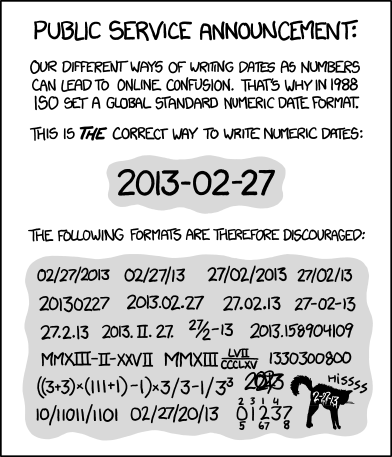Michael Everett wrote:JeffEngel wrote:Well, the Delthak inch is one standard that they've done a lot of work to keep consistent and in spreading use. They could go from there in a metric-inspired fashion, with measures of volume, mass, force, etc. all based on there, and larger and smaller units of any of them in standardized prefixes and along base 10 or base 12 (for instance) increments.
The Delthak inch has been helpful in that it's just taking the standard Safehold inch (may Langhorne burn in eternal torment at some high temperature Kelvin) and standardizing it. You wouldn't remain in close equivalents to Safehold's conventional measurements and have metric's interrelatedness across different measured properties and consistent base [insert favorite] structure, so it would have to run on the charm of utility from there rather than on the strength of familiarity.
Exactly. You don't need a new measurement, just a way of logically implementing what you already have. Trying to re-establish the meter would be incredibly difficult, especially since you couldn't explain to anyone on Safehold who wasn't already in the know where the darned thing came from!
No, using a regular progression from the Inch makes far more sense given the current religious/societal setup. Once you have the inch standardized, you can then re-standardize all the derivative measurements. For instance, inspired by original Imperial measurements, we could have...
12 inches = 1 foot (already existing, no problems there).
3 feet (36 inches) = 1 yard12 feet (4 yards) = 1 cord (measurement invented for Safehold)
12 cords (144 feet) = 1 rope
12 ropes(1,728 feet) = 1 cable
3 cables (5,184 feet, 12x12x12x3) = 1 Delthak Mile (1 Earth Imperial mile = 5,280 feet)12 cables (4 Delthak Miles) = 1 Delthak League
12 Delthak Leagues (48DMile/144 cables) = 1 Delthak Grand League
From the way that many different countries use different inches, they probably have mildly divergent definitions of what a mile actually is. This would allow for "adjustments" to be made, hence the whole simplification without needing new basic measurements thing.
Base 12 measurements make sense if you do math in base 12 (or base 60) like the Babylonians did. Unless you have 12 fingers this is hard. If a computer was developing a measuring system they would probably work on Base 2,8 or 16 (assuming you use binary, some computers have been built using trinary (base 3) code). (RS485 uses trinary coding for data transfer for example (with binary coded data)(high, low, zero)).
The simple fact you are using the number 12 and not 10 (with numbers running 0,1,2,3,4,5,6,7,8,9,X,E) indicates how bad a fit this is to the English (and most other) languages that don't use duodecimal notation.
So to rationalize measurements (and to easily translate the stored drawings in OWL's databases) a base 10 system is most rational. Tooling up with a 25mm inches means that a simple conversion is possible without using 127 tooth gears later (ask any machinist how much fun that is). You then start using units like hands(4").










